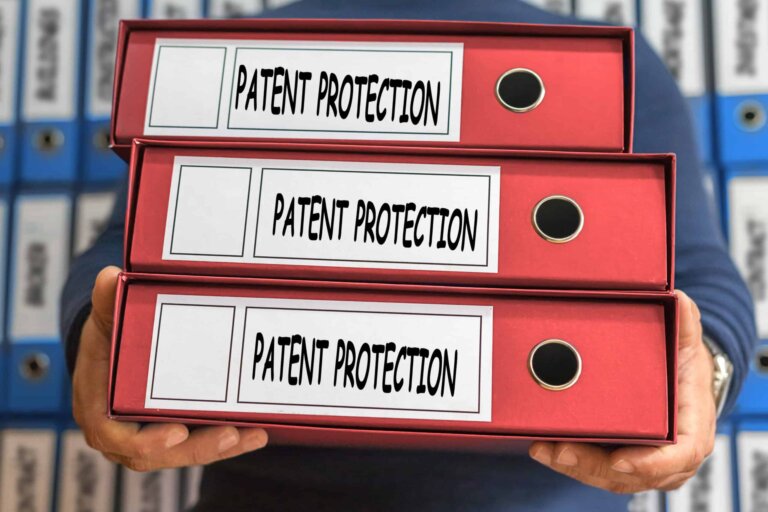https://boldip.com/wp-content/uploads/2021/11/shutterstock_716860588-1-1024×683.jpg
“Does my invention qualify for US patent protection?” is a question we answer often. Unfortunately, it’s never as easy as a straightforward yes or no. We have to delve into four specific criteria that apply to every application, regardless of type. These four criteria include novelty, utility, non-obviousness, and subject matter eligibility coverage.
All of these are subjective issues that your patent examiner will cover, in detail, as they process your application. To avoid a denial, you’re going to have to do quite a bit of due diligence before you even consider submitting.
Does My Invention Qualify for US Patent Protection?
The first thing you’ll have to determine is if you have an invention that qualifies for a utility or a design patent, as the two can be quite different:
- Utility: The invention is a process, machine, composition of matter or some other functional creation. An example would be a doctor who creates a new type of medical implant to provide a better quality of life to someone with a chronic illness.
- Design: In a design patent, you’re protecting the appearance of something rather than its function. One of the most well-known examples of a design patent is the one that Coca-Cola held for its uniquely shaped bottle.
So, if your idea is functional, then you’re looking at needing a utility patent. If it is ornamental, then you’d need a design patent. For many consumer products, getting protection for both is very common! For either of these types of patents, you’ll need to meet the four criteria.
The Four Patent Criteria
We’ve defined novelty, utility, non-obviousness, and eligible subject matter below, as well as provided a few real-world examples that actually received patents and theoretical ideas that would be disqualified.
| Criteria | Good Example | Bad Example |
|---|---|---|
| Novelty: The design is functionally different from anything ever published on the subject matter. | A specialized swimsuit material that does not block UV rays to eliminate tan lines. | A swimsuit with removable straps that’s billed as “tan line-free.” |
| Utility: The design is useful for more than just a single purpose or a sole entity. | A hairbrush with specialized loops designed to eliminate tugging and damage for different types of hair extensions. | A specialized hairbrush designed to work for a custom set of hair extensions created for a one-time hair show. |
| Non-obviousness: The design is not something that could be created by a reasonably skilled individual with access to available information like prior art. | A wireless stethoscope that’s capable of remotely monitoring patients and storing information in the cloud. | A stethoscope with an attached recorder that saves the patient’s heart rhythms for further study later. |
| Subject matter eligible: Items that naturally occur in nature, are physical phenomena, or are purely abstract cannot be patented. | Complementary DNA, or lab-generated DNA created for the purpose of research. | Organically created DNA that has not been altered or updated in a laboratory. |
Due Diligence in Ensuring a Strong Patent Application
One of the first things you’re going to need in your journey for approval is a patent and prior art search. When it comes to denials for novelty or non-obviousness, prior art is almost always the culprit. That means the examiner has located something publicly available that either duplicates your invention or makes it very easy for a reasonably skilled person to recreate.
An attorney will help you complete an in-depth patent search so you can locate and prepare to dispute any prior art or patents out there. For both novelty and non-obviousness, the burden of proof is on the examiner to show you didn’t meet the criteria. A good argument prepared in advance can help you overcome these limitations.
When it comes to usefulness and statutory eligibility, it’s all in how you describe your item. You essentially have to paint a picture with your words. You need to clearly define your item, how it’s useful and how it functions. This can be tricky, as often when we write our own description, we’re blind to ambiguities. Our first tip is to work with someone else to write your description as it will guarantee you’ve aptly defined your invention.
We also suggest including drawings. Diagrams can provide details that just can’t be explained in a paragraph or two. Drawings can be the most engaging part of an application and help provide some needed clarity for examiners.
Your invention does qualify for US patent protection if it meets the four primary criteria—however, all those criteria are at the examiner’s discretion. It’s best to work with an attorney who understands the various pitfalls in each criterion so you can prepare for pushback in advance.
Bold Patents provides expert consultation to help you understand if your invention will qualify for patent protection, and we even provide a copy of “Bold Ideas: The Inventor’s Guide to Patents” so you can learn more. Contact us online or call 800-849-1913 to schedule a free Discovery Call.

